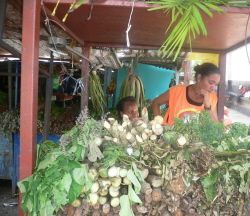 (Playa Community) With one foot in ancient traditions and the other in modern living, Panama’s people stick with their roots as they keep up with the race in this age of bits and bytes. One tradition that continues to thrive among the people is the use of medicinal plants.
(Playa Community) With one foot in ancient traditions and the other in modern living, Panama’s people stick with their roots as they keep up with the race in this age of bits and bytes. One tradition that continues to thrive among the people is the use of medicinal plants.
In the popular bustling Mercadito de Calidonia, located at the end of Calidonia Street, where the people of Panama shop and the timid tourist tends to avoid, sits Yesilika Sanchez with her roadside stand selling medicinal plants. Yesilika is called China by her customers, and has been selling on Calidonia street for the last 6 years.
In Panama, the use of plants to cure illness and for spiritual ceremonial is common not only in the countryside, but also with city dwellers. Using leaves, seeds, flowers, roots and barks for remedies is one of the most widespread forms of medicine. Even though a great number of these plants are not scientifically validated, generations of families benefit from their properties and pass recipes down. Rather than a visit to a doctor, the roadside herbalist is a cheaper means to get rid of ailments. Many people also believe in the magical powers to bring good luck and to fight against witchcraft.
Plant seller Yesilika Sanchez has also gained the knowledge of plants from those before her. She has learned from other sellers and also from her customers who buy plants and report back. Yesilika tells me that the method of using a plant is very important, as there are several different ways to release properties. Plants are prepared in tinctures, eaten, used like poultices and even have their steam inhaled. One of the most common methods for preparation is to make an infusion to drink like a tea. The majority of the plants are priced at 50 cents a bunch. The more expensive bundle goes for $3.00 and is called Quita Maldición for removing a curse.
Para Palo is used for energy and sexual vitality. The bark of the tree is seeped in Sanson wine (Vino Sanson) for 10 days and then a cup is drunk every day.